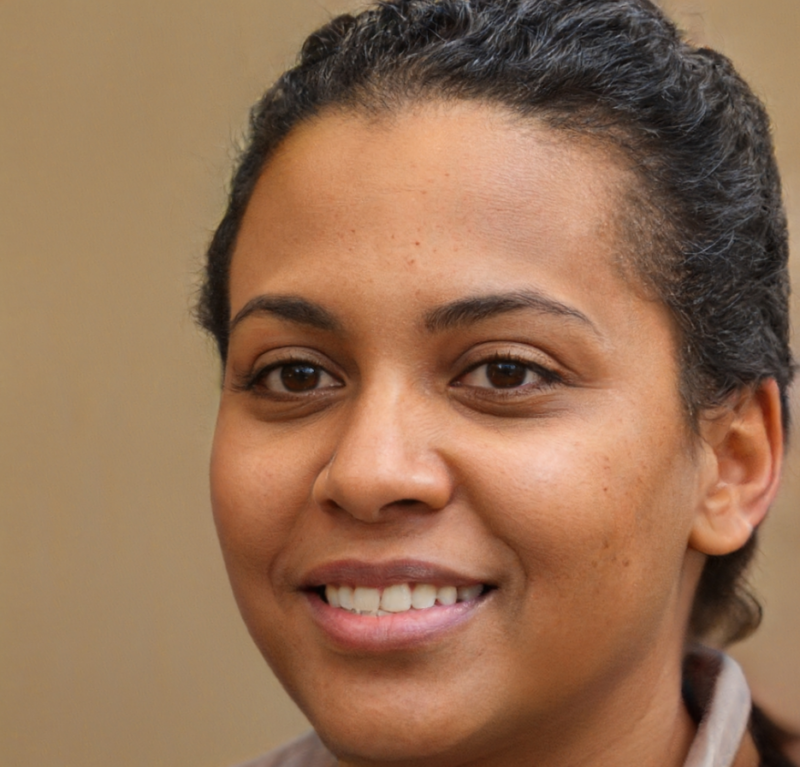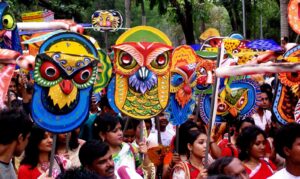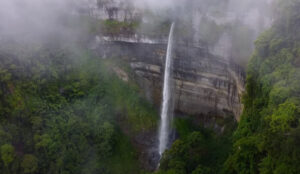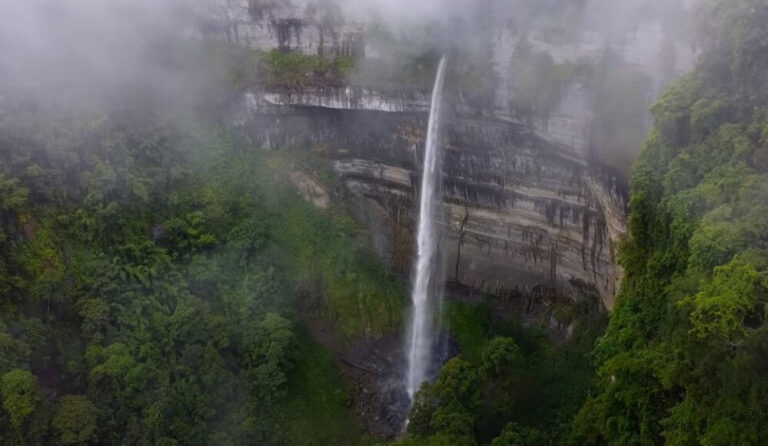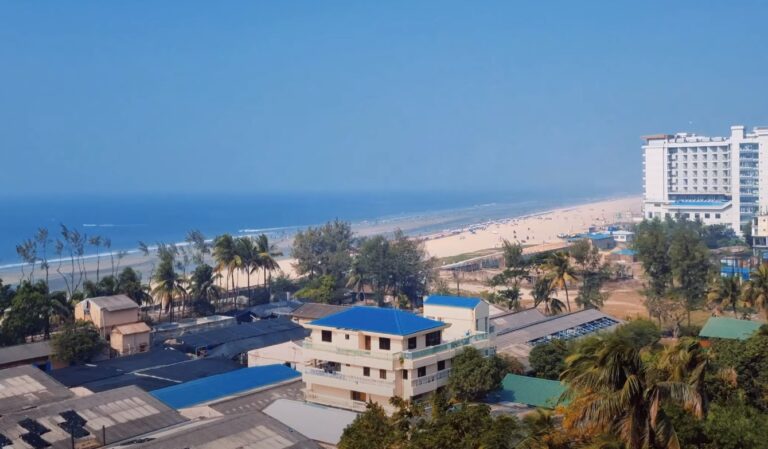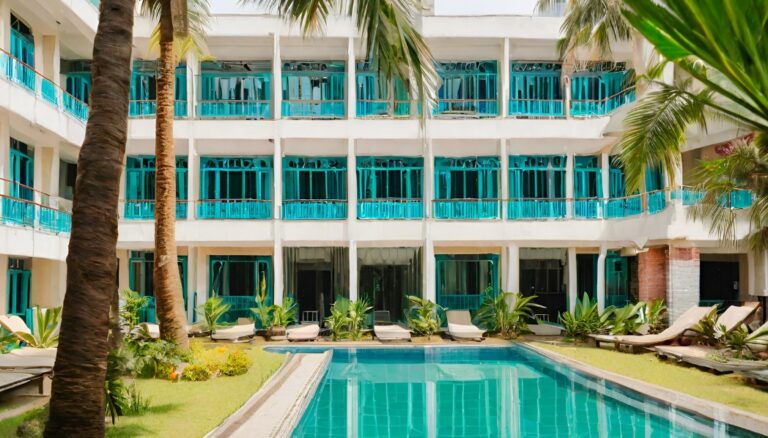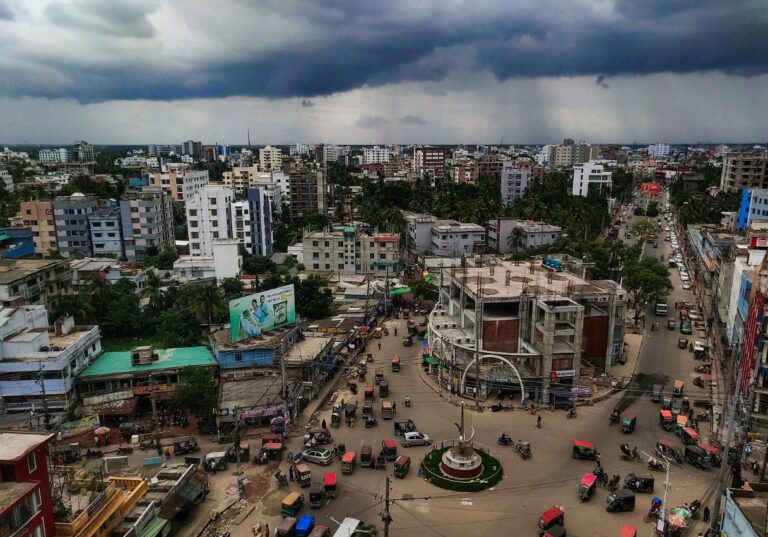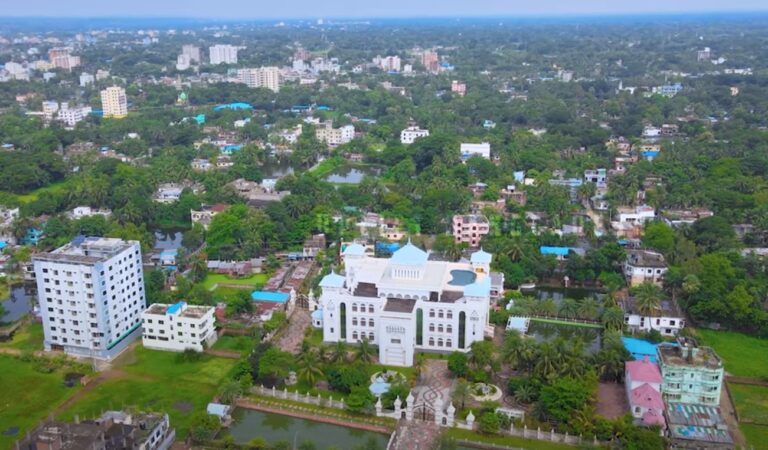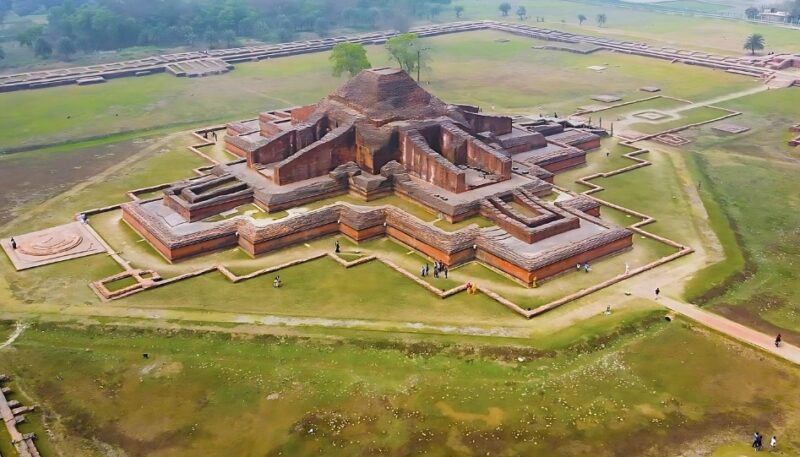
During a period of major changes in Buddhism, Paharpur was where the best minds came together to understand it all.
Monks visited the large monastery complex for centuries to discuss deep questions about humanity.
Paharpur became a crucial intellectual center and saw the emergence of a new form of Buddhism.
The temple at its center inspired major Buddhist monuments across Southeast Asia, like Cambodia’s Angkor Wat and Indonesia’s Borobudur.
How Buddhism Changed and Grew Over Time
When Buddha was alive, his followers could just ask him their questions and get answers directly. Even after his death, for a few centuries, only a handful of people were seen as the main thinkers in Buddhism. One of them was the great Indian emperor Ashoka, who helped shape and spread Buddhist teachings across the region.
But as Buddhism spread across Asia in the centuries that followed, it began to splinter. Different ways of interpreting the Buddhist texts appeared, and new texts were written. People in different countries adapted the faith to fit their own cultures and circumstances. Even within the same region, the ways of practicing Buddhism changed and evolved in various ways.
The Great Monastery of Paharpur
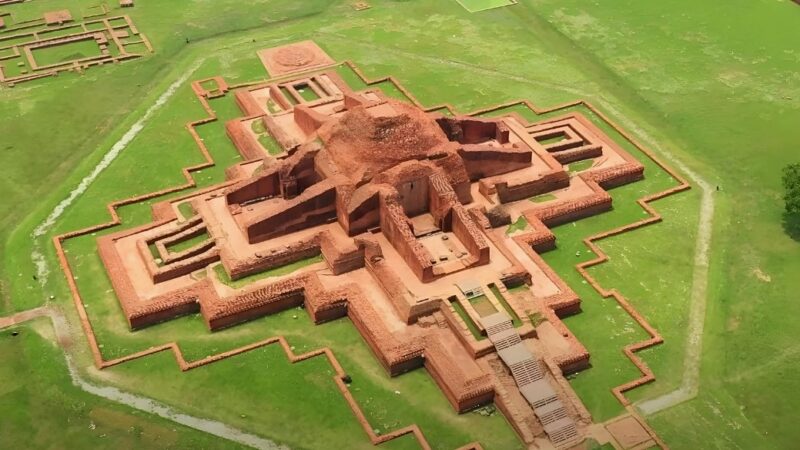
In the 8th century, amidst a fragmented Buddhist world, the grand monastery of Paharpur was founded in present-day Bangladesh. It quickly became a gathering place for the brightest minds of the era, who came to debate and reconcile diverse Buddhist philosophies. For centuries, Paharpur was one of the world’s foremost intellectual hubs, blending various ideas into new schools of thought.
Paharpur played a pivotal role in the development of Vajrayana Buddhism, which later spread throughout Asia and became the dominant form in Tibet. The monastery’s influence extended along new maritime trade routes to Southeast Asia, inspiring monumental sites like Borobudur in Indonesia, Bagan in Myanmar, and Angkor Wat in Cambodia, all modeled after Paharpur’s main temple.
The central temple of the Somapura Mahavihara monastery at Paharpur is a testament to the innovative Buddhist ideas born there. Notably, it was the first Buddhist temple designed in a cross shape, continuing to awe visitors today. Surrounding the central courtyard are four long walls lined with rooms that once housed monks. The monastery’s simple, harmonious lines and intricate terracotta plaques represent some of the greatest artistic achievements of its time.
This vast monastery was made possible by the patronage of the wealthy Pala Dynasty, which ruled Bengal (now Bangladesh and West Bengal, India) for 400 years. Constructed at the end of the 8th century under King Dharma Pala Deva, one of the most significant Pala rulers, Paharpur marked a resurgence of Buddhism in the region.
Known as Somapura Mahavihara, the monastery was linked with other major Pala-supported institutions like Vikramashila and Nalanda in Bihar, India. Scholars frequently traveled between these centers, enriching the intellectual life of the monks at Paharpur.
An Intellectual Life at Paharpur
The long walls forming the central quadrangle at Paharpur housed the rooms where monks lived. There are 177 rooms, and historians believe each room would have accommodated multiple monks.
Life in the monastery was formal and structured. Monks woke up at sunrise, walked around the main temple two or three times on all three tiers, and then began their day studying the scriptures. Afternoons were usually spent in meditation after lunch. At sunset, they would walk around the temple again.
Paharpur, as a center of learning, didn’t have classrooms in the traditional sense. Instead, monks emphasized self-learning, using their room space to read texts or contemplate various issues.
Many monks and academics were not permanent residents. Some stayed for only a few days or weeks, seeking solitude in a spiritual environment or guidance from other scholars. To maintain this focus, the monastery was intentionally separated from local communities to avoid distractions.
Rise of Vajrayana Buddhism
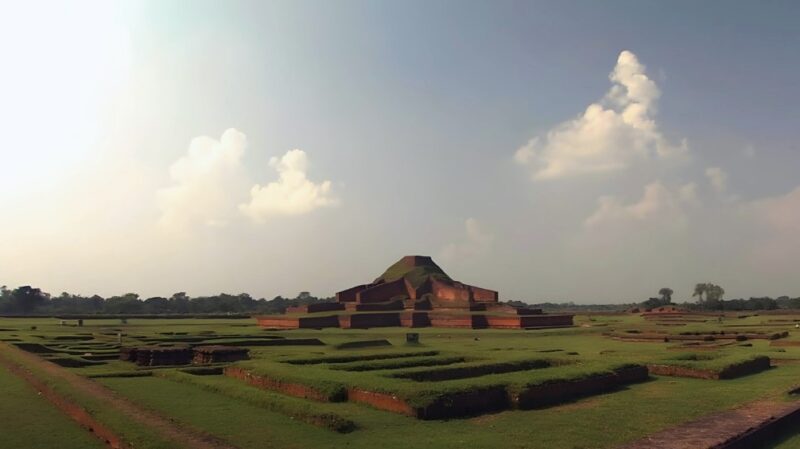
By the time Paharpur was established, Buddhism had two main branches: Mahayana and Theravada.
However, a new branch called Vajrayana was developing in Bengal. Monks at monasteries like Paharpur meditated on this new form, evolving it into a philosophy that spread across Asia.
Vajrayana builds on Mahayana principles, which teach that all beings suffer and individuals should seek enlightenment to help everyone, not just themselves.
The key difference is that Vajrayana teaches that enlightenment can be achieved much faster, allowing individuals to make a difference immediately.
Followers of Vajrayana believe that through specific rituals and a complex understanding of the world, they can achieve in one lifetime what might take others hundreds or thousands of lifetimes.
While Vajrayana philosophies spread throughout Asia, they are still widely practiced only in a few regions.
Shingon Buddhism in Japan and Tendai Buddhism in China retain some Vajrayana elements, but it remains the dominant Buddhist philosophy in Tibet, Mongolia, northern India, and parts of Nepal.
Architectural Influence
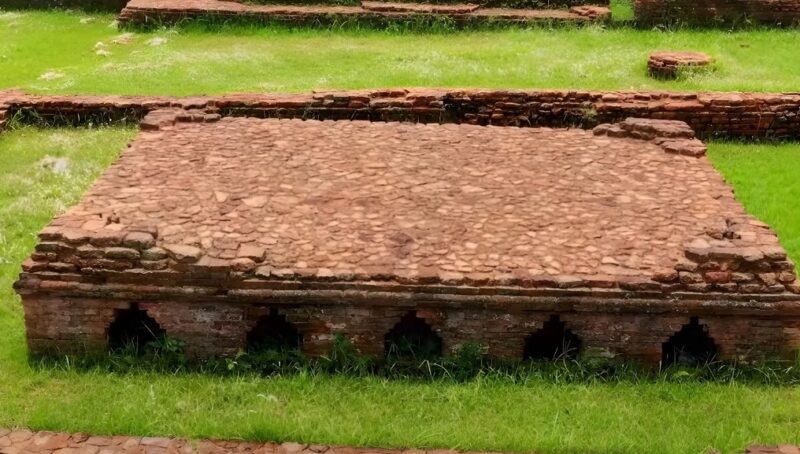
Beyond the spread of Vajrayana Buddhism, Paharpur’s most significant influence is evident in the architecture of major monuments in Southeast Asia, when I first saw it I was amazed by its beauty.
The main temple at Paharpur was one of the first to feature a cross-shaped design.
This cruciform layout is thought to represent the five ‘Eternal Buddhas,’ a concept in some Buddhist philosophies, especially Vajrayana.
The temple consists of three terraces, with the lower two and middle terrace including paths for circumambulation. The upper level is a large rectangular central block.
These architectural elements were carried to Southeast Asia via a new trade route established by the Pala Dynasty, reaching as far as Java.
When Buddhists in Southeast Asia built their most important temples, they drew inspiration from Paharpur.
Today, you can see the terraced cruciform design at Borobudur in Indonesia, Angkor Wat in Cambodia, and Bagan in Myanmar.
How to Get There
From Dhaka:
- By Road: You can drive from capital city Dhaka to Paharpur via Bogura and Mahasthangarh. The journey takes about 9 hours (260 km). Car rental services from Dhaka cost around US$ 60 per day. One-way drop-offs and pick-ups from Paharpur can be arranged for US$ 60 per direction. The best route is Dhaka – Savar – Chandra – Tangail – Jamuna Bridge (Bangabandhu Setu) – Bogura – Jaypurhat – Badalgachhi – Paharpur.
- By Air: There are three daily flights from Dhaka to Rajshahi (roundtrip US$ 100). From Rajshahi, it’s a 4-hour drive (100 km) to Paharpur. Car rental services from Rajshahi cost around US$ 60 per day. One-way drop-offs from Rajshahi airport to Paharpur are US$ 30 per direction.
- By Train: Several daily trains connect North Bengal with the Kamlapur Railway Station in Dhaka. The closest train station to Paharpur is Jamalganj, Naogaon, which is 5 km from the site. Auto rickshaws and van rickshaws are available to connect the train station with Paharpur Bazar and the monastery site. The journey duration depends on the chosen train.
When to Visit
The best time to visit Paharpur is between October and March, when the climate is moderate with little to no rain. Daily temperatures range from 13°C to 31°C.
How to Visit
Given Bangladesh’s subtropical monsoon climate with wide variations in rainfall, temperatures, and humidity, visitors should bring adequate clothing, mosquito repellent, sun protection, and comfortable shoes.
Due to the diversity and remoteness of Paharpur and its surrounding attractions, plan to spend at least two or three days. Allocate one full day for the Somapura Mahavira, its museum, and the nearby heritage site Satyapir er Bhita. You can combine a visit to Mahasthangarh with Jagaddala Mahavihara, Bhasu Vihara, and Gokul Medh for a full-day itinerary, best done by rental car.
